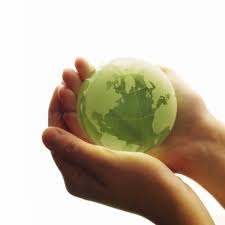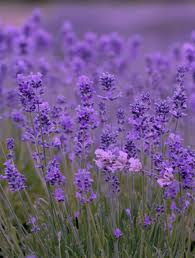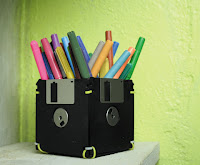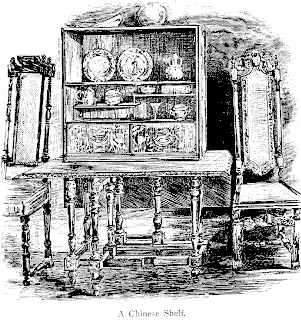Thursday, March 31, 2011
Blogger Shout-out
I recently joined a blog directory, Blotanical, that is chock-full of wonderful bloggers. Besides being a great community of fellow gardeners and nature lovers, they are knowledgeable and willing to share that knowledge as well as some of their experiments and adventures. Many are writing some great posts that are informative and helpful. Here are a few that you just might find very interesting:
Asea Aranion:Healing and Death - Worm Bin Experimentation
Some unique ideas for a worm bin -
Bread + Buttercups - Organic Gardening Essentials
Some key points for organic gardening -
Earth to Eats - Natural Easter Egg Dye and Our Secret Weapon
Did you know you can use onion skins to dye Easter eggs?
Fairy Yardmother - DIY Bird Bath
Make a piece of art by reusing old things. Beautiful!
Fluffius Muppetus - Composting Cardboard
Using a cardboard box as a compost bin--temporarily...
Hardy Eco Garden - Frugal Season Extenders
Using things from around the house to keep plants warm -
The Heirloom Seeds Blog - Compost - Nourishing Your Garden Soil
Some great tips for using compost -
Kitchen Garden FAQ's - Intercropping
Great info on companion planting -
Life in Sugar Hollow - Houseplants: Quiet Air Filters
Using plants to purify the air -
Life on the Balcony - How to Turn a Pallet into a Garden
Ingenious!
North Country Gardening - Plant a Garden to Offset Price Hikes at the Grocery Store
Enough said!
Sussex Gardens - Free Plant Labels
Great way to reuse -
Sweet Bean Gardening - Free Soil Composition Test
So easy to do yourself -
Thanks for Today - What is Manure Tea?
And it does not have to smell or be messy.
©Michelle A. Potter
Wednesday, March 30, 2011
Monday, March 28, 2011
The Paper Towel Challenge - Success is Progressing Along
Several times this week I caught myself reaching for a paper towel and then grabbed a rag. I am beginning to re-train myself away from the paper towels. Here are the results for last week:
Monday
1 paper towel to wipe up sink in bathroom
Total: 1
Tuesday
1 paper towel to wipe up sink in bathroom
Total: 1
Wednesday
2 paper towels to wipe kitchen counter
Total: 2
Thursday
1 paper towel to clean up after feeding cats
1 paper towel to wipe and clean cat’s eyes
Total: 2
Friday
Total: 0
Saturday
Total: 0
Sunday
Total: 0
Grand Total: 5 paper towels for the week - down from 52 last week!
By noting how many paper towels I use I have been much more aware of my paper towel usage. I did slip up a few times when I was in a hurry or ran out of rags, but that has taught me to get more rags. We have plenty of old washcloths and towels that we can use for this purpose. I am now placing more rags in the kitchen and bathrooms, so that I do not need to grab paper towels. Our trash bin consistently has a very small amount of trash on trash day. By reducing our paper towel usage, that amount will be even smaller. So, I will let this stand as the last day of the Paper Towel Challenge. I have learned a lot from this challenge, and I hope you can see that it is not very hard to make a small change. It really is simply a matter of paying attention. Good luck!
©Michelle A. Potter
Related posts:
The Paper Towel Challenge - Progress Report
The Paper Towel Challenge
Monday
1 paper towel to wipe up sink in bathroom
Total: 1
Tuesday
1 paper towel to wipe up sink in bathroom
Total: 1
Wednesday
2 paper towels to wipe kitchen counter
Total: 2
Thursday
1 paper towel to clean up after feeding cats
1 paper towel to wipe and clean cat’s eyes
Total: 2
Friday
Total: 0
Saturday
Total: 0
Sunday
Total: 0
Grand Total: 5 paper towels for the week - down from 52 last week!
By noting how many paper towels I use I have been much more aware of my paper towel usage. I did slip up a few times when I was in a hurry or ran out of rags, but that has taught me to get more rags. We have plenty of old washcloths and towels that we can use for this purpose. I am now placing more rags in the kitchen and bathrooms, so that I do not need to grab paper towels. Our trash bin consistently has a very small amount of trash on trash day. By reducing our paper towel usage, that amount will be even smaller. So, I will let this stand as the last day of the Paper Towel Challenge. I have learned a lot from this challenge, and I hope you can see that it is not very hard to make a small change. It really is simply a matter of paying attention. Good luck!
©Michelle A. Potter
Related posts:
The Paper Towel Challenge - Progress Report
The Paper Towel Challenge
Friday, March 25, 2011
Join the Millions for Earth Hour 2011
Earth Hour began in 2007 in Australia when over 2.2 million people made a statement about climate change by turning off their lights for one hour. Since then, hundreds of millions have participated in the event each year.
Earth Hour 2011 begins Saturday, March 26 at 8:30PM. Turn off your lights for one hour. After that, maybe begin to wonder what else can be done...
Earth Hour 2011 begins Saturday, March 26 at 8:30PM. Turn off your lights for one hour. After that, maybe begin to wonder what else can be done...
©Michelle A. Potter
Our Magnificent HOME is Here!
The earth is a very beautiful and precious place to live. We have the breath of life, misting waterfalls, orange and luminous sunsets, soft and relaxing beaches, majestic mountains, sensitive and formidable elephants, incredibly resplendent whales, and other splendid creatures. Our lawns and gardens are filled with colorful and textural plantings, beds of soft green grass, serenading birds, and other wildlife we find alluring when we stand on our patios or decks and watch them with awe. All of this and more is worth a few small changes in lifestyle.
Take a look at http://www.agreenearth.blogspot.com/ for a short 2 minute plus film that will touch your heart and perhaps inspire.
©Michelle A. Potter
Thursday, March 24, 2011
The Butterfly's Sighs
Seven Things I Vow to do this Year for Sustainable Living to Celebrate Earth Day 2011
I have been living sustainably for over 25 years, but sustainable living is about constant and consistent vigilance and mindfulness. For the rest of my life, there will be more things I can do and more things I can learn to be greener, more energy-conscious, and more earth-conscious. What are some things you can do to celebrate Earth Day in 2011? Here are some ways I intend to live more sustainably this year:
1. Incorporate more water conservation methods in my garden. I love flowers and plants and have quite a large garden, so I try to keep them as healthy as possible during those very hot months with enough water to keep them alive. Sometimes that seems to be too much. This year, I want to try to find some ways to keep my plants healthy but save more water. I have some soaker hoses, but they do not work well on hills--of which I have many.
3.Add more rain barrels. I have four rain barrels with two on each downspout in the back. When we have a lot of rain, they fill up very quickly. I could easily add two more, one additional for each downspout.
4. Reduce the lawn area. I have many landscaped beds throughout the yard, but there is still a lot of grassy area. And I will maintain some lawn, possibly forever. The lawn and grass is a water hog. The less I have of it, the less water I need to use.
5. Propagate more, buy less. If I get near a plant sale, I eventually come home with more plants than I really need. I usually do find space for them, but then I have the leftover plastic pots. If I propagated more of my own plants or traded plants with a friend, there would be little or no waste. To get rid of the plastic pots, I either recycle them, take them to a local nursery, or post them as available on http://www.freecycle.org/.
6. Teach more people to compost. As a Master Gardener, I teach composting classes. I also initiated and am involved in the Master Composter/Recycler Program. Our first Master Composter/Recycler class graduates April 12. One thing I have learned is once people start composting, they really begin to enjoy it and they spread the word.
7. Take more time to enjoy my garden. This may or may not be considered a sustainable living activity, but it seems to me that taking some quiet time to relax and enjoy can only benefit us, our friends and family, and the earth. If I have taken that time to relax and enjoy, I have more to give to others and the planet.
Jan over at the Thanks for Today blog is celebrating Earth Day with the Garden Bloggers Sustainable Living Project to encourage garden bloggers to write about ways in which we are incorporating more sustainable practices in our yard and garden. Take a moment to check out her blog: http://thanksfor2day.blogspot.com/2011/03/gardeners-sustainable-living-2011-win.html
©Michelle A. Potter
I have been living sustainably for over 25 years, but sustainable living is about constant and consistent vigilance and mindfulness. For the rest of my life, there will be more things I can do and more things I can learn to be greener, more energy-conscious, and more earth-conscious. What are some things you can do to celebrate Earth Day in 2011? Here are some ways I intend to live more sustainably this year:
1. Incorporate more water conservation methods in my garden. I love flowers and plants and have quite a large garden, so I try to keep them as healthy as possible during those very hot months with enough water to keep them alive. Sometimes that seems to be too much. This year, I want to try to find some ways to keep my plants healthy but save more water. I have some soaker hoses, but they do not work well on hills--of which I have many.
- Some things I already do: use soaker hoses, mulch, water early in the morning, water deeply, water sparingly
- Some things I will try to do: use more soaker hoses, incorporate some sort of irrigation system, plant fewer annuals :(
3.Add more rain barrels. I have four rain barrels with two on each downspout in the back. When we have a lot of rain, they fill up very quickly. I could easily add two more, one additional for each downspout.
4. Reduce the lawn area. I have many landscaped beds throughout the yard, but there is still a lot of grassy area. And I will maintain some lawn, possibly forever. The lawn and grass is a water hog. The less I have of it, the less water I need to use.
5. Propagate more, buy less. If I get near a plant sale, I eventually come home with more plants than I really need. I usually do find space for them, but then I have the leftover plastic pots. If I propagated more of my own plants or traded plants with a friend, there would be little or no waste. To get rid of the plastic pots, I either recycle them, take them to a local nursery, or post them as available on http://www.freecycle.org/.
6. Teach more people to compost. As a Master Gardener, I teach composting classes. I also initiated and am involved in the Master Composter/Recycler Program. Our first Master Composter/Recycler class graduates April 12. One thing I have learned is once people start composting, they really begin to enjoy it and they spread the word.
7. Take more time to enjoy my garden. This may or may not be considered a sustainable living activity, but it seems to me that taking some quiet time to relax and enjoy can only benefit us, our friends and family, and the earth. If I have taken that time to relax and enjoy, I have more to give to others and the planet.
Jan over at the Thanks for Today blog is celebrating Earth Day with the Garden Bloggers Sustainable Living Project to encourage garden bloggers to write about ways in which we are incorporating more sustainable practices in our yard and garden. Take a moment to check out her blog: http://thanksfor2day.blogspot.com/2011/03/gardeners-sustainable-living-2011-win.html
©Michelle A. Potter
Wednesday, March 23, 2011
Energysavers and Women in Layered Clothing
One of the most energy consuming areas of our homes is heating and cooling. We spend lots of money on keeping our homes warm in the winter and cool in the summer. My husband and I wear several layers of clothes during the coldest parts of winter to stay warm because we turn the heat down to 60˚F to 65˚F to save energy. When we sit down to talk or watch a movie, we cover up with some blankets. At night we turn the heat down to 55˚F and cover up with lots of blankets and comforters. Should we have guests over who may not be dressed for our cooler home, we turn the temperature up to around 68˚F to 70˚F. This works for us, for now. As we age, that may change, but we feel good that we are saving energy and money.
Some of the previous generations learned how to live this way rather comfortably. I remember visiting my great aunt in Germany years ago in December. She lived in an old house, and that old house was cold. I am certain it was cold because it was old and because my aunt kept the heat way down. She was one of many that endured the ravages of World War II and all of its sparseness. I think many of those who experienced those times find it difficult to indulge in great luxury and comfort. She always wore wool clothing and sweaters in the winter. At night, I remember feeling as if I would never get warm in that cold bedroom. However, after about 10 minutes of huddling and shivering beneath the huge goose down comforter, I did reach a nice and toasty comfortable warmth.
Although it can be difficult to make that choice between being energy conscious and being comfortable, there are a few things we can do to reduce the amount of energy we use to heat and cool our houses. Here are some tips:
In the cooler months:
Some of the previous generations learned how to live this way rather comfortably. I remember visiting my great aunt in Germany years ago in December. She lived in an old house, and that old house was cold. I am certain it was cold because it was old and because my aunt kept the heat way down. She was one of many that endured the ravages of World War II and all of its sparseness. I think many of those who experienced those times find it difficult to indulge in great luxury and comfort. She always wore wool clothing and sweaters in the winter. At night, I remember feeling as if I would never get warm in that cold bedroom. However, after about 10 minutes of huddling and shivering beneath the huge goose down comforter, I did reach a nice and toasty comfortable warmth.
Although it can be difficult to make that choice between being energy conscious and being comfortable, there are a few things we can do to reduce the amount of energy we use to heat and cool our houses. Here are some tips:
In the cooler months:
- Turn the heat down if only by a few degrees.
- Wear layers of warm clothing inside the house.
- Use ceiling fans on the reverse setting to circulate the warm air in rooms.
- Use space heaters in rooms most often used.
- Have throws and blankets handy for use when sitting down.
- Turn the temperature down at night when most of the house is not in use.
- Use humidifiers to increase the humidity inside the house. The increased humidity can make the house feel a little warmer.
- Use passive solar energy by opening all of the curtains of south facing windows to let the sun shine in and warm the house.
- Turn the temperature up if only by a few degrees. Experiment with what is comfortable.
- Use ceiling fans on the forward setting to circulate air in rooms.
- Use pedestal or table fans in rooms to circulate air in the house.
- Close all curtains on windows facing the sun.
- Check that all windows and doors are sealed and caulked properly.
- Invest in a programmable thermostat that will automatically adjust the temperature day and night to your specifications.
- Invest in solar panels to save on electricity and gas usage for heating and cooling.
- Invest in thermal windows where the layer of air between the windows acts as insulation.
Monday, March 21, 2011
The Paper Towel Challenge - Progress Report
Well, it has been a week since I started the paper towel challenge – to try to use less paper towels and reduce my waste that goes into the landfill. Here are the results for last week:
Monday
1 paper towel to clean up after feeding cats
1 paper towel to wipe and clean cat’s eyes
2 paper towels to clean up cat vomit
1 paper towel to wipe up sink in bathroom
2 paper towels to wipe kitchen counter
Total: 7
Tuesday
1 paper towels to clean up after feeding cats
1 paper towel to wipe and clean cat’s eyes
1 paper towel to wipe up sink in bathroom
2 paper towels to wipe kitchen counter
Total: 5
Wednesday
1 paper towels to clean up after feeding cats
1 paper towel to wipe and clean cat’s eyes
1 paper towel to wipe up sink in bathroom
2 paper towels to wipe kitchen counter
Total: 5
Thursday
1 paper towel to clean up after feeding cats
1 paper towel to wipe and clean cat’s eyes
2 paper towels to clean up cat vomit
1 paper towel to wipe up sink in bathroom
2 paper towels to wipe kitchen counter
Total: 7
Friday
1 paper towels to clean up after feeding cats
1 paper towel to wipe and clean cat’s eyes
1 paper towel to wipe up sink in bathroom
2 paper towels to wipe kitchen counter
Total: 5
Saturday
1 paper towels to clean up after feeding cats
1 paper towel to wipe and clean cat’s eyes
1 paper towels to wipe up sink in bathroom
4 paper towels to wipe kitchen counter
4 paper towels to clean kitchen trash bin
Total: 11
Sunday
1 paper towels to clean up after feeding cats
1 paper towel to wipe and clean cat’s eyes
3 paper towels to clean up cat vomit
1 paper towels to wipe up sink in bathroom
2 paper towels to wipe kitchen counter
4 paper towels to clean mess on kitchen floor
Total: 12
Grand Total: 52 paper towels for the week
By tracking my paper towel usage, I can see in which situations I seem to use paper towels the most. Where there is a spill, I can use an old towel to wipe up the mess and then clean with a cloth rag. This upcoming week I will try to reduce that amount by even more. Over the years, I have tried to use rags as much as possible, buying washable cloth rags in bulk. However, I have discovered that for the more messy jobs or situations, I tend to grab the paper towels. Onwards and upwards!
©Michelle A. Potter
Monday
1 paper towel to clean up after feeding cats
1 paper towel to wipe and clean cat’s eyes
2 paper towels to clean up cat vomit
1 paper towel to wipe up sink in bathroom
2 paper towels to wipe kitchen counter
Total: 7
Tuesday
1 paper towels to clean up after feeding cats
1 paper towel to wipe and clean cat’s eyes
1 paper towel to wipe up sink in bathroom
2 paper towels to wipe kitchen counter
Total: 5
Wednesday
1 paper towels to clean up after feeding cats
1 paper towel to wipe and clean cat’s eyes
1 paper towel to wipe up sink in bathroom
2 paper towels to wipe kitchen counter
Total: 5
Thursday
1 paper towel to clean up after feeding cats
1 paper towel to wipe and clean cat’s eyes
2 paper towels to clean up cat vomit
1 paper towel to wipe up sink in bathroom
2 paper towels to wipe kitchen counter
Total: 7
Friday
1 paper towels to clean up after feeding cats
1 paper towel to wipe and clean cat’s eyes
1 paper towel to wipe up sink in bathroom
2 paper towels to wipe kitchen counter
Total: 5
Saturday
1 paper towels to clean up after feeding cats
1 paper towel to wipe and clean cat’s eyes
1 paper towels to wipe up sink in bathroom
4 paper towels to wipe kitchen counter
4 paper towels to clean kitchen trash bin
Total: 11
Sunday
1 paper towels to clean up after feeding cats
1 paper towel to wipe and clean cat’s eyes
3 paper towels to clean up cat vomit
1 paper towels to wipe up sink in bathroom
2 paper towels to wipe kitchen counter
4 paper towels to clean mess on kitchen floor
Total: 12
Grand Total: 52 paper towels for the week
By tracking my paper towel usage, I can see in which situations I seem to use paper towels the most. Where there is a spill, I can use an old towel to wipe up the mess and then clean with a cloth rag. This upcoming week I will try to reduce that amount by even more. Over the years, I have tried to use rags as much as possible, buying washable cloth rags in bulk. However, I have discovered that for the more messy jobs or situations, I tend to grab the paper towels. Onwards and upwards!
©Michelle A. Potter
Thursday, March 17, 2011
What Does it Mean to be Green?
Green living does not mean that you must live under certain strict guidelines in order to define yourself as a person who lives an earth-conscious life. It simply means that you try on a daily basis to live consciously with the earth in mind. It does not mean that you beat yourself up when you forget to recycle something or you use a paper napkin at a restaurant or you forget to turn your bedroom light off when you leave the room. If we all did that, we would be putting too much pressure on ourselves. Of course, those things are important, but we are human. We will forget from time to time. The point of greener living is to try to be mindful of our choices and try to incorporate new habits that reduce waste, reuse items we would normally throw away, and recycle materials instead of putting them in the trash--on a regular basis.
Guilt does nothing but cause worry lines and make us feel bad. What is important is to stay on task, keeping
our goals clear in our minds. We should never try to be perfect. All that is required to call yourself an earth-conscious individual or family is that you are actively doing things on a daily basis that could fall into the category of green living. And when you can, you add new habits and continue to build on that ideal at your own pace. The degree to which you live your life as green is not important. The important thing is to choose to live green as much as you can.
Green living does not mean that we are judgmental towards others who are not as green as we are. Many times people learn from our example, not our prodding, judging, or critical comments. Talk about your greener living ideas and strategies and the rewards you get from it, but try not to judge someone who has not yet been able, for whatever reason, to incorporate all of that into their lives. When we judge someone harshly or criticize them, making them feel small or insignificant or wrong, we create division when what we want to do is create harmony and togetherness. We are all in this together.
©Michelle A. Potter
Guilt does nothing but cause worry lines and make us feel bad. What is important is to stay on task, keeping
our goals clear in our minds. We should never try to be perfect. All that is required to call yourself an earth-conscious individual or family is that you are actively doing things on a daily basis that could fall into the category of green living. And when you can, you add new habits and continue to build on that ideal at your own pace. The degree to which you live your life as green is not important. The important thing is to choose to live green as much as you can.
Green living does not mean that we are judgmental towards others who are not as green as we are. Many times people learn from our example, not our prodding, judging, or critical comments. Talk about your greener living ideas and strategies and the rewards you get from it, but try not to judge someone who has not yet been able, for whatever reason, to incorporate all of that into their lives. When we judge someone harshly or criticize them, making them feel small or insignificant or wrong, we create division when what we want to do is create harmony and togetherness. We are all in this together.
©Michelle A. Potter
Wednesday, March 16, 2011
Make Your Own Baby Powder
Making your own baby powder reduces product waste that may end up in the landfill. However, many baby powder containers are recyclable. Here is a recipe for homemade baby powder:
1/4 cup oatmeal
1/4 cup chamomile flowers, dried
1 Tbsp. peppermint leaves, dried
1 Tbsp. baking soda
4 Tbsp. cornstarch or arrowroot powder
In a spice mill, grind oatmeal, chamomile flowers, and peppermint leaves until a fine powder. It may be helpful to grind each ingredient separately. Sift for a fine powder. Mix in the baking soda and cornstarch. Pour in a shaker bottle or container.
If you want another fragrance, omit the chamomile and peppermint and add a few drops of your favorite aromatherapy oil scent. You can also use lavendar flowers instead of the chamomile and peppermint.
©Michelle A. Potter
1/4 cup oatmeal
1/4 cup chamomile flowers, dried
1 Tbsp. peppermint leaves, dried
1 Tbsp. baking soda
4 Tbsp. cornstarch or arrowroot powder
In a spice mill, grind oatmeal, chamomile flowers, and peppermint leaves until a fine powder. It may be helpful to grind each ingredient separately. Sift for a fine powder. Mix in the baking soda and cornstarch. Pour in a shaker bottle or container.
If you want another fragrance, omit the chamomile and peppermint and add a few drops of your favorite aromatherapy oil scent. You can also use lavendar flowers instead of the chamomile and peppermint.
©Michelle A. Potter
Saturday, March 12, 2011
NEW! Monthly Reuse Tip - Rumpelstiltskin Riches
So many things we own can be reused when they break or become obsolete. We can opt not to throw them in the landfill by finding another use for them. Besides, it can be fun to come up with ideas on how to reuse something. Send me your ideas!
Every month we will highlight an item here with several reuse options.
Rumpelstiltskin Riches for March - Computer Diskettes
If you are like me, you still have old computer diskettes hanging around. Here are a few things you can do to reuse them:
- Make a birdfeeder from floppy disks. See instructables on the how-to.
- Make a pencil caddy from diskettes. See espritcabane for the instructions.
- Make earrings out of diskette parts. See boingboing for more information.
You can also recycle your diskettes by sending them to greendisk.
©Michelle A. Potter
Friday, March 11, 2011
The Paper Towel Challenge
For years, I have been living as green as I can by recycling, reusing, organic gardening, composting, etc. However, when it comes to cleaning around the house, I am constantly struggling between using a rag or using a paper towel. I try to use a rag for a day or two for general cleaning around the kitchen, and then I throw it in the wash. When there is something I need to wipe up off the floor or there is a big mess, I tend to reach for the paper towels. Many times I believe I fear the spread of germs or washing too many rags. With the state of our landfills, I think the use of paper towels is worse than washing a lot. Besides, I would need to wash a lot of rags before it really would make that much of a difference.
For the next few months, I will keep track of how many paper towels I use per week starting on Monday. I will post it here. Perhaps that will inspire me, and maybe you, to use less of them.
For the next few months, I will keep track of how many paper towels I use per week starting on Monday. I will post it here. Perhaps that will inspire me, and maybe you, to use less of them.
©Michelle A. Potter
Thursday, March 10, 2011
Tips for a Nontoxic Home
Many furnishings, building materials, and home cleaners contain toxic chemicals that seep into our atmosphere and our homes. These chemicals damage our environment and can cause health problems especially to those with weak immune systems. By making a few changes, we can ensure that we are at least reducing those toxins and breathing cleaner air inside our homes.
Here are a few tips to reduce toxins in our homes:
-Avoid carpet floors, if at all possible. Replace carpet with wood or ceramic tile. If you want to use carpet, there are some environmental carpets available made from recycled food and drink containers or from natural fibers, such as wool or cotton.
http://www.greenfloors.com/
http://www.ecobydesign.com/
-Use plants to purify the indoor air. Spider plant and Aloe Vera plant help to clean indoor air of formaldehyde. Bamboo Palm helps to clean indoor air of benzene.
Here are a few tips to reduce toxins in our homes:
-Avoid carpet floors, if at all possible. Replace carpet with wood or ceramic tile. If you want to use carpet, there are some environmental carpets available made from recycled food and drink containers or from natural fibers, such as wool or cotton.
http://www.greenfloors.com/
http://www.ecobydesign.com/
-Use plants to purify the indoor air. Spider plant and Aloe Vera plant help to clean indoor air of formaldehyde. Bamboo Palm helps to clean indoor air of benzene.
Green Wedding Tips
Invitations
Use an email invitation site to create your invitations. These sites allow you to design your own invitations and add your pictures and/or music at a minimal cost compared to printed invitations. Using this method prevents the paper from ending up in the landfill, if not recycled. And all the energy that would normally be used for the printing is also saved. Some sites that offer email invitations include:
http://www.myinvitationlink.com/
http://www.moderndayinvite.com/
Photography
When interviewing wedding photographers, ask them if they would create a digital wedding album made up of digital photographs that can be viewed on your home computer or ask if they would include the digital frame loaded with your photographs instead of the traditional album. This should save money compared to printing all of the pictures and placing them in the album. Using digital photography allows you to keep these photographs forever without any deterioration, and there are no photographic chemicals used in creating them.
Wedding Gown
Buy a vintage gown or borrow/buy one from a relative and have it altered. Reusing something extends the life of that item and usually costs less than something brand new.
-OR-
Take an existing gown you own and alter it a bit to fit your wedding gown needs. This would be a gown you could use for special occasions for many years to come.
Decorations
If using candles at the wedding venue or reception, try to ensure they are soy-based or beeswax candles. Decorate with potted flowers and plants that can be planted in your or someone's garden after the festivities.
Reception
Use filtered water in large pitchers instead of individual plastic water bottles. If you use the individual water bottles, have a bin available for recycling. Use the bin for recycling glass and other plastics that may be thrown away at the reception. Add a large sign by the bin to encourage everyone to recycle.
Use china, glass, or reusable plastic plates and glasses instead of paper plates and styrofoam that will usually be thrown away.
Add a small compost bin for organic waste.
Miscellaneous
Instead of renting a limousine, rent a horse and carriage to arrive and depart from the wedding.
As wedding favors, use small herbs in pots or small tree saplings that can be replanted.
© Michelle A. Potter
Subscribe to:
Posts (Atom)


















